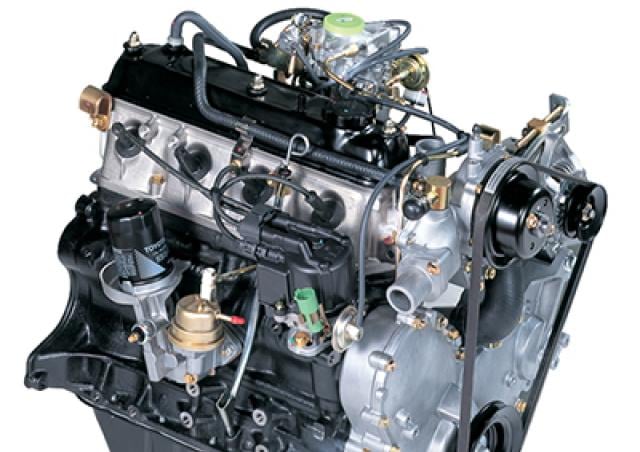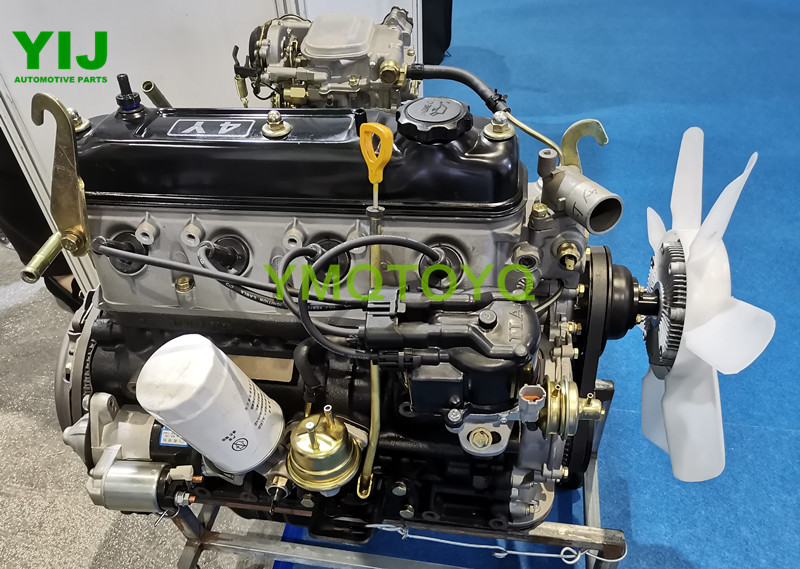The Role of the 4Y Engine in the Automotive Industry’s Evolution
The Role of the 4Y Engine in the Automotive Industry’s Evolution
Blog Article
The Ultimate Overview to the Engine: Key Insights for Every Auto Lover
Understanding the engine is fundamental for any type of vehicle enthusiast, as it offers as the heart of the vehicle and dictates its efficiency. This overview offers a detailed exam of engine anatomy, types, and the auto mechanics behind their operation, including the cutting-edge technologies that are improving the vehicle landscape. Moreover, it emphasizes the important nature of upkeep practices that can substantially influence an engine's life-span. The complexities of engine characteristics and the newest improvements in modern technology existing questions that merit additional exploration. What might these insights expose regarding the future of auto engineering?
Makeup of an Engine
Recognizing the makeup of an engine is essential for any kind of cars and truck enthusiast wanting to dig deeper right into vehicle technicians. An internal combustion engine mostly is composed of a number of essential components that work in unison to convert gas right into power.
At the heart of this system lies the cylinder block, which houses the cyndrical tubes where burning occurs. Piston movement within these cyndrical tubes is promoted by the crankshaft, which equates direct movement right into rotational energy. In addition, the camshaft plays a crucial function in controlling the opening and closing of the engine's shutoffs, ensuring correct air-fuel blend intake and exhaust gas expulsion.
Various other important components consist of the fuel system, which provides the engine with the essential gas, and the ignition system, in charge of launching burning - 4y engine. The air conditioning and lubrication systems are additionally important, preserving ideal operating temperatures and lowering rubbing, respectively
Engine Types and Configurations
A varied series of engine kinds and configurations exists, each offering special benefits and negative aspects customized to various driving demands and choices. One of the most common engine types include inline, V, level, and rotary arrangements.
Inline engines, including cylinders organized in a single line, are understood for their simplicity and effectiveness. They are frequently located in portable cars, offering a balance of power and economic climate. V engines, defined by their 2 financial institutions of cyndrical tubes arranged in a V shape, provide higher efficiency and smoother procedure, making them prominent in sporting activities and high-end cars.
Level engines, or boxer engines, have horizontally opposed cylinders, which add to a reduced facility of gravity, enhancing lorry security. These are typically seen in brands like Subaru and Porsche.
Rotating engines, although much less common, utilize an unique layout with a triangular rotor and offer high power-to-weight proportions. They master compact and lightweight applications, mainly seen in Mazda vehicles.
Each engine type serves details efficiency characteristics, weight circulations, and gas performances, ensuring that car lovers can pick the best engine configuration to match their driving style and car demands.

Exactly How Engines Function
Engines, no matter their kind or arrangement, run on basic principles that regulate their efficiency and effectiveness. At their core, engines convert fuel right into power via a collection of controlled surges or compressions. This process usually includes 4 main strokes: intake, exhaust, compression, and power.
Throughout the consumption stroke, the engine draws in a mix of air and fuel. In the power stroke, a spark fires up the compressed combination (in gasoline engines) or the blend stirs up spontaneously (in diesel engines), resulting in a quick expansion of gases that presses the piston down.
The efficiency of an engine is influenced by numerous aspects, consisting of the layout of the burning chamber, the sort of fuel made use of, and the accuracy of the engine's more information components. Understanding these go now essential concepts is important for auto enthusiasts who seek to appreciate the detailed technicians behind their lorries, in addition to for those intending to improve performance with adjustments and tuning.
Developments in Engine Technology
In the last few years, improvements in engine innovation have substantially changed the automotive landscape, boosting both performance and ecological sustainability. Among one of the most notable innovations is the growth of turbocharging and supercharging, which permits smaller sized engines to generate greater power outcomes without compromising fuel effectiveness. This has resulted in an increase in the popularity of scaled down engines, supplying makers with the capacity to fulfill rigorous discharges laws while keeping efficiency criteria.
In addition, hybrid and electric powertrains are improving the engine standard. Hybrid systems combine internal combustion engines with electrical motors, enhancing gas intake and lowering exhausts. Fully electrical vehicles (EVs) eliminate the combustion engine entirely, counting on innovative battery modern technology to deliver instant torque and impressive velocity.
In addition, the combination of fabricated knowledge and device learning in engine administration systems permits real-time optimization of performance parameters, boosting performance and responsiveness. Innovations such as variable shutoff timing and straight fuel injection even more refine burning processes, making best use of power output while decreasing waste.
As the vehicle industry remains to advance, these innovations in engine innovation will certainly play an important role in forming the future of wheelchair, prioritizing both performance and sustainability.
Maintenance Tips for Fanatics
Keeping an engine is as important as the technologies that enhance its efficiency. Routine upkeep not just lengthens the life of your engine yet also makes certain optimal performance.
Replace and inspect air filters periodically to make sure correct airflow, which is important for burning effectiveness. A blocked air filter can bring about lowered efficiency and raised fuel intake. Keep an eye on the coolant degrees to avoid getting too hot, and replace coolant according to the solution routine. 4y engine.

Conclusion
In verdict, a detailed understanding of engine makeup, types, and auto mechanics is crucial for automobile enthusiasts. Normal maintenance practices, consisting of oil adjustments and air filter checks, are important for making sure optimum engine functionality and durability.

Engines, no matter of their type or setup, operate on fundamental principles that govern their performance and performance. In the power stroke, a stimulate fires additional info up the compressed mix (in fuel engines) or the blend stirs up automatically (in diesel engines), resulting in a quick development of gases that presses the piston down.In recent years, improvements in engine innovation have considerably changed the vehicle landscape, improving both efficiency and environmental sustainability.
Report this page